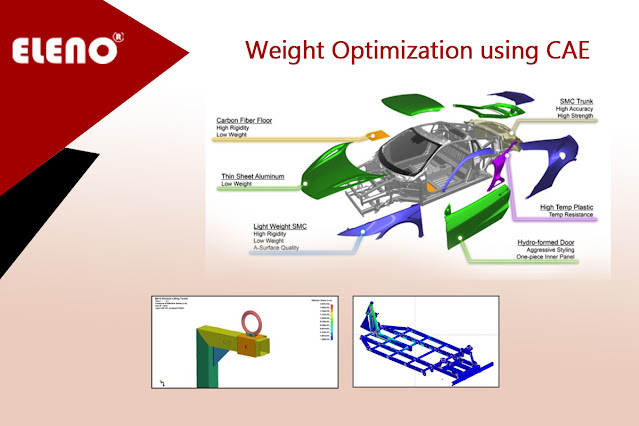Weight Optimization Using CAE: Redefining Engineering Efficiency
In today's competitive industrial landscape, optimizing the weight of products while maintaining structural integrity is a paramount concern for engineers and designers. Weight optimization not only leads to cost savings but also enhances performance, energy efficiency, and sustainability. Computer-Aided Engineering (CAE) has emerged as a powerful tool in this quest for efficiency. In this blog, we will delve into the concept of weight optimization using CAE and explore its significance in modern engineering.
 |
Weight Optimization Using CAE By Elenoenergy
Weight optimization is a multidisciplinary challenge that transcends various industries, from aerospace to automotive, and from civil engineering to consumer products. Here's why it's so crucial:
- Reducing a product's weight can result in substantial savings in material costs, production, and transportation.
- Lighter structures often exhibit better dynamic behavior, fuel efficiency, and agility.
- Lowering the weight of products can contribute to reduced environmental impact, especially in sectors with high emissions.
- Many industries are subject to strict regulations regarding weight limits, making weight optimization a legal necessity.
- Companies that can produce lighter, more efficient products gain a significant edge in the market.
CAE is a simulation-driven approach that leverages advanced software tools to analyze and optimize designs. It plays a pivotal role in weight optimization by offering the following advantages:
- CAE allows engineers to create and test virtual prototypes, reducing the need for physical prototypes and saving time and resources.
- Engineers can explore numerous design iterations quickly, fine-tuning structures for optimal weight and performance.
- CAE assists in selecting the right materials by evaluating their mechanical properties, ensuring they meet design requirements while minimizing weight.
- CAE tools enable in-depth structural analysis to ensure that optimized designs maintain safety and integrity under various conditions.
- Engineers can identify critical design parameters and their impact on weight, helping them make informed decisions.
.jpg)


Comments
Post a Comment